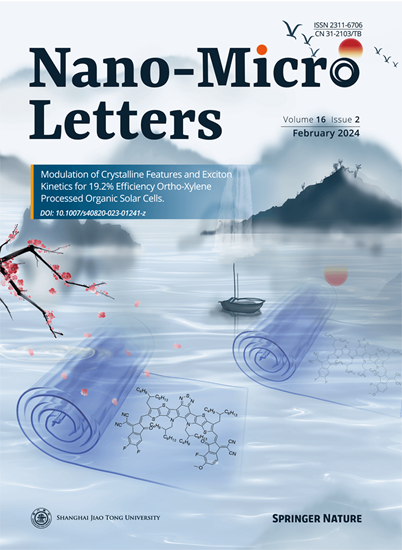极端环境应用的辐射冷却材料。
IF 36.3
1区 材料科学
Q1 Engineering
引用次数: 0
摘要
辐射冷却是一种被动的热管理策略,利用材料的自然能力,通过红外辐射散热。它对能源效率、气候适应和可持续技术发展具有重要意义,在个人热管理、建筑温度调节和航空航天工程中都有应用。然而,辐射冷却性能容易受到环境老化和特殊环境条件的影响,限制了其在极端环境中的适用性。本文对极端环境辐射冷却进行了综述,重点介绍了如何提高环境耐久性和冷却效率。本文首先介绍了基于热流平衡的热交换通道设计原则,以优化各种极端环境下的辐射制冷量。随后,系统地讨论了与这些原理相一致的辐射冷却材料和微纳米结构的最新进展,重点讨论了它们在陆地居住环境、陆地极端环境、航空环境和空间环境中的应用。此外,本文还对极端辐射冷却装置的冷却效果和抗环境能力进行了评价。最后,概述了阻碍极端环境应用辐射冷却装置发展的主要挑战,并提出了克服这些限制的潜在策略,旨在促进其未来的商业化。本文章由计算机程序翻译,如有差异,请以英文原文为准。
Radiative Cooling Materials for Extreme Environmental Applications
Highlights
-
Heat exchange mechanisms for enhancing cooling performance and environmental tolerance are elucidated.
-
Challenges in extreme environments, along with the corresponding anti-environmental radiative cooling materials and micro-nano structures, are reviewed.
-
Valuable insights into enhancing the next generation of radiative cooling for extreme environmental applications are discussed.
求助全文
通过发布文献求助,成功后即可免费获取论文全文。
去求助
来源期刊

Nano-Micro Letters
NANOSCIENCE & NANOTECHNOLOGY-MATERIALS SCIENCE, MULTIDISCIPLINARY
CiteScore
32.60
自引率
4.90%
发文量
981
审稿时长
1.1 months
期刊介绍:
Nano-Micro Letters is a peer-reviewed, international, interdisciplinary, and open-access journal published under the SpringerOpen brand.
Nano-Micro Letters focuses on the science, experiments, engineering, technologies, and applications of nano- or microscale structures and systems in various fields such as physics, chemistry, biology, material science, and pharmacy.It also explores the expanding interfaces between these fields.
Nano-Micro Letters particularly emphasizes the bottom-up approach in the length scale from nano to micro. This approach is crucial for achieving industrial applications in nanotechnology, as it involves the assembly, modification, and control of nanostructures on a microscale.
 求助内容:
求助内容: 应助结果提醒方式:
应助结果提醒方式:


